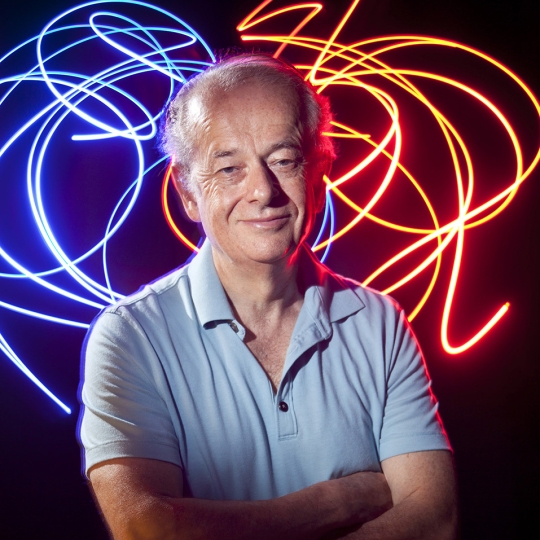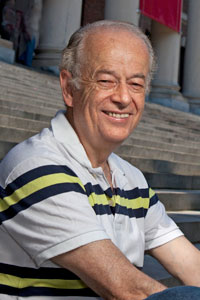News
Federico Capasso, the Robert L. Wallace Professor of Applied Physics and Vinton Hayes Senior Research Fellow in Electrical Engineering. (Eliza Grinnell/Harvard SEAS)
In early 2016, a team led by Federico Capasso, the Robert L. Wallace Professor of Applied Physics and Vinton Hayes Senior Research Fellow in Electrical Engineering at the Harvard John A. Paulson School of Engineering and Applied Sciences, showed that "metalenses," arrays of tiny rectangular nanostructures that looked like skyscrapers in a vanishingly small city and focused light to a single point, could be produced for commercial devices. He recognized that the metalenses created in his lab had the potential to do everything conventional lenses could do and more, enabling new functionality in a smaller package for all kinds of advanced devices Capasso filed a report of invention with the Harvard Office of Technology Development and, soon after, the discovery made Science’s cover.
Not long after that Science cover, OTD licensed the technology to a startup, Boston-based Metalenz, founded by Capasso, applied physics graduate student Rob Devlin, and Bart Riley, a tech entrepreneur with whom that office had previously worked. Now Metalenz’s chief executive, Devlin made a key materials advance in the Capasso lab that greatly improved the lenses’ efficiency. Earlier this year, Metalenz logged its first major sale, with manufacturer STMicroelectronics.
Topics: Applied Physics, Electrical Engineering, Entrepreneurship
Cutting-edge science delivered direct to your inbox.
Join the Harvard SEAS mailing list.
Scientist Profiles
Federico Capasso
Robert L. Wallace Professor of Applied Physics and Vinton Hayes Senior Research Fellow in Electrical Engineering




